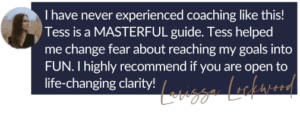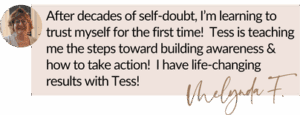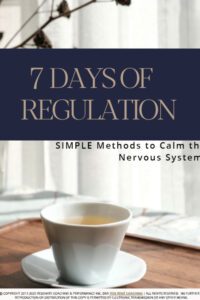Face Your Fears: 6 Ways to Emotional Resilience. You’ve found a Foundation Guide to Emotional Healing, here to help you meet fear with resilience and grow stronger from within.

Emotional healing begins in quiet moments of resilience. Gentle practices to restore balance and strength await you here.
Table of Contents
Face Your Fears

Fear doesn’t vanish when ignored, it grows louder until you finally face it.
Fear isn’t always a monster in the closet or a snake on the path. More often, it shows up in subtle ways: hesitation before asking for help, silence when you want to set a boundary, or holding back from a dream you secretly crave.
Fear Responses Whisper:
“What if I’m rejected?”
“What if I fail?”
“What if they don’t like me?”
It makes sense that we try to protect ourselves by avoiding discomfort. But here’s the paradox: when you don’t face your fears, you also avoid life. You numb yourself to pain, but you also close the door on joy.
The truth? Fear doesn’t vanish when ignored. It grows louder until you finally face it. And when you do, something powerful happens: the fear shrinks, and you grow stronger.
This Foundation Guide to Emotional Healing explores six practical steps to face your fear and build resilience, and feel more joy, without letting fear run your life.
1. Running from Fear Hurts More in the Long Run

Avoidance feels easier in the moment, but grows heavier over time.
Fear avoidance is like carrying an invisible backpack filled with rocks. At first it feels light, almost manageable, but over time the weight grows heavier with every step.
“Avoidance reinforces anxiety.”
The longer you avoid something, the more exhausting it becomes. Research on avoidance shows it actually reinforces anxiety, training your brain to see the avoided thing as more dangerous than it really is. When you finally face it, you realize the build-up was far worse than the reality. This is why resilience begins not when you feel brave, but when you choose to stop running & avoiding.
Avoidance feels like relief in the short term. But over time, it becomes a trap. It’s like the frog in slowly boiling water you don’t feel the pain until it’s too late.
Like the frog, avoidance doesn’t feel awful in the moment. It’s the weight that builds: the missed opportunities, the self-doubt, the shame of holding back. One day, you realize the avoidance has grown heavier than the thing itself.
Facing fear, on the other hand, is shorter and sharper. Each time you do it, you create a small shift in how your brain and body respond. You build resilience.
2. Face your Fears without trying to “beat” them.

“Her powerful coaching questions helped me build the self-trust I needed.”
“How do I face my fears?”
There’s an important psychological shift when you stop rejecting fear and start observing it. By simply noticing your thoughts and feelings without catastrophizing or judging them, you activate the mindful part of your brain that calms the nervous system.
“Facing your fears doesn’t mean fighting them. It means noticing them.”
Exposure therapy shows that this kind of gentle observation rewires neural pathways, teaching the brain that discomfort can be tolerated. The goal isn’t to erase fear it’s to shrink its influence over your choices.
Each quiet moment you spend acknowledging fear without reacting is like a micro-workout for your courage.
In that way, facing your fears doesn’t mean fighting them but noticing them. Imagine yourself in the situation; giving the speech, having the hard conversation, showing up anyway, and simply observe the thoughts and feelings that arise.
You’re not trying to eliminate fear. You’re practising standing still in its presence.
What happens?
-
You realise fear isn’t fatal—it won’t turn you to stone.
-
Your body learns you can tolerate discomfort.
-
Each exposure builds a little more strength.
Even if your fear shrinks by only 1%, that counts. Small steps add up. A mountain is climbed one step at a time and courage is built the same way.
3. Face Your Fears With Small Steps

Small, consistent steps help you practise facing fear without overwhelm.
“Each time you face a small fear you tell your nervous system: ‘I can handle this.'”
Resilience isn’t one-and-done. It’s repetition.
Think of practising courage like lifting weights at the gym. You wouldn’t start with the heaviest barbell you’d build strength gradually. Small, consistent exposures to manageable fears create measurable progress that compounds over time.
“Small steps to overcome fear”
Taking steps to overcome fear in this way is called “graded exposure,” and it’s proven to reduce anxiety. The beauty of practising in small steps is that your brain starts to generalize the lesson: if you can handle one fear, maybe you can handle another. It focuses on wins and solutions so that over time, you don’t just conquer isolated fears: you reshape your overall sense of capability.
Start small. Don’t choose the deepest trauma to begin with pick something manageable. Practise when you’re calm, not already spiraling. Each time you face a smaller fear, you train your nervous system: I can handle this.
Practise at an ideal time when you aren’t already afraid or you are particularly rocking your world to check out your fear. You’ll show yourself that it is possible to look at that thing you’re afraid of & that you can handle being a bit uncomfortable. Show yourself you can do it with these baby steps!
Gradually, you’ll be able to face bigger fears without shutting down. Your new resilience opens up more space for joy.
This is how resilience builds: slowly, gently, step by step letting go of old patterns and embracing new ones.
If fear feels too big to practise on your own, walk with me. In a private consult, we’ll map out gentle, step-by-step ways to face fear safely so you don’t have to figure it out alone.
4. Notice That You Survived

Taking time to notice that you survived builds trust in your own resilience.
One of the most powerful ways to retrain your brain is to record evidence after facing fear. Write down what you did, what you felt, and most importantly that you survived.
“You can teach yourself that all feelings are safe.”
This simple journaling habit reinforces new neural pathways and helps your mind anchor the truth: discomfort doesn’t equal danger.
Journaling this way is one of the most straightforward tools you can use. Over time, your own notes become a personalised playbook of resilience a reminder that every challenge faced left you stronger than before.
Also, after facing a fear, pause. Take a breath. And remember to remind yourself: I’m still here. No one died.
This may sound obvious, but your brain needs the evidence. Each time you face a fear and come out intact, you’re rewiring your nervous system. You’re teaching yourself that accepting all feelings is survivable.
Courage doesn’t mean you felt fearless, it means you acted anyway. Even a 1% reduction in anxiety is progress.
Facing Your Fears should not feel like suffering.
But remember: exposure should never equal suffering. If it gets overwhelming, take a break, or scale back to a smaller step. Fear doesn’t have to be conquered all at once it just needs to be met, gently and consistently.
Always back off of the fear exposure if it gets overwhelming.
Take a day off of it. Or take a smaller first step next time. Keep asking what it is you need in the process & respect the answer. With some guided, gentle & mindful exposure, you’ll find that discomfort can’t take you down the way you thought it could.
5. Face Your Fears of “I Can’t Handle It”

Facing your fears directly is how you discover that you can handle far more than you thought.
Avoidance feels protective, but it chips away at your confidence. Every time you run, your brain learns: I can’t handle discomfort like this. Over time, avoidance “dis-courages” you and removes courage.
“The act of facing fear builds the very capacity you think you lack.”
The belief that you “can’t handle it” is one of fear’s most convincing lies. But neuroscience shows your nervous system is far more adaptable than you realize.
Each exposure you survive proves your inner strength, even if it’s just a 1% gain in confidence.
So if you ask: “Can I handle anxiety?” or struggle to find ways for overcoming self-sabotage, the Happy Truth is that the act of facing fear builds the very capacity you think you lack.
Every small win becomes evidence for your emotional resilience, reshaping your identity into someone who can handle more than you imagined, including the rejection you thought you couldn’t handle
The antidote is exposure. When you face your fears, you show your brain: I can handle this, even if it’s uncomfortable.
Think about learning anything new driving, swimming, public speaking. At first it’s terrifying. But repeated exposure makes the activity ordinary. Your brain habituates. Fear becomes boring.
That shift is everything. It’s what transforms “I can’t” into “I can.”
→ Your GIFT
Every act of resilience needs the balancing of comfort. Soothe your body with this free 7-day guide; Simple daily practices to help you feel calm and present.
“I never thought I could face fear without shutting down.
Tess helped me build the courage I carry every day.” – Dan S.
6. Fear is About Perspective.

Perspective changes everything, fear shrinks when you see it differently.
Most fear isn’t reality, it’s perspective.
Perspective shifts are at the heart of emotional healing. Two people can face the same situation; one sees danger everywhere, the other sees a challenge they can grow from. The difference is perception, not reality.
Psychology research calls this “cognitive reframing,” and it’s a cornerstone of resilience. When you practise facing your fears, you give your brain a chance to reframe what it once saw as unbearable into something tolerable even meaningful.
“By changing perspective you’re right-sizing fear – and a right-sized fear cannot control your life.”
Take driving as an example. Every time you get behind the wheel, there’s a risk of an accident. But most people don’t focus on that risk. They trust the odds, and they drive.
Now imagine someone who’s just had an accident. The risk hasn’t changed, but their perception has. What was once ordinary now feels like danger.
Fear skews perspective. It convinces you that the threat is bigger than it really is. But when you face your fears:
– You build evidence of your resilience.
– Your perspective shifts back to reality (not fear).
– You gain evidence: “I did it. I survived. I’m stronger than I thought.”
Bringing It All Together
Fear whispers that you’re too weak, too fragile, too small. Resilience grows every time you prove otherwise.
When you:
-
Choose to face fear instead of avoiding it,
-
Stand in its presence without fighting,
-
Practise gently and consistently,
-
Notice you survived,
-
Build the confidence of “I can handle it,”
-
And shift your perspective.
You step into a life that is bigger than fear. You realize that you are emotionally resilient and can be with your emotions as they are.
Fear doesn’t disappear but it becomes quieter and less powerful.
You begin to realize that fear can be part of the journey and you can move forward even when you feel fear. That builds confidence and you become stronger, steadier, and more resilient than you imagined.
Frequently Asked Questions:
Q1. How can I face fear without feeling overwhelmed?
A. Fear feels overwhelming when your nervous system believes danger is near. Start by grounding: slow your breath, feel your feet, name five things you see. These practices signal safety, making it easier to act in spite of fear.
Q2. Can resilience really be built if I’ve always felt anxious?
A. Yes. Resilience isn’t fixed, it grows with practice and support. Each time you face a fear in a small way and recover, your nervous system learns: I can handle this.
Q3. What if I freeze and can’t take action at all?
Freezing is a natural response that your body is trying to protect you. Start with the smallest possible step: unclench your hands, soften your shoulders, or name one safe thing around you. Tiny actions signal to your body that movement is safe again, and over time they open the way to bigger steps.
Ready to Face Your Fears with Support?
When fear circles back, it’s not willpower you’re missing, it’s safety. On a consult call, we’ll uncover the tools your nervous system needs so you can move forward with confidence.

“…I have life-changing results with Tess!” – Melynda F

